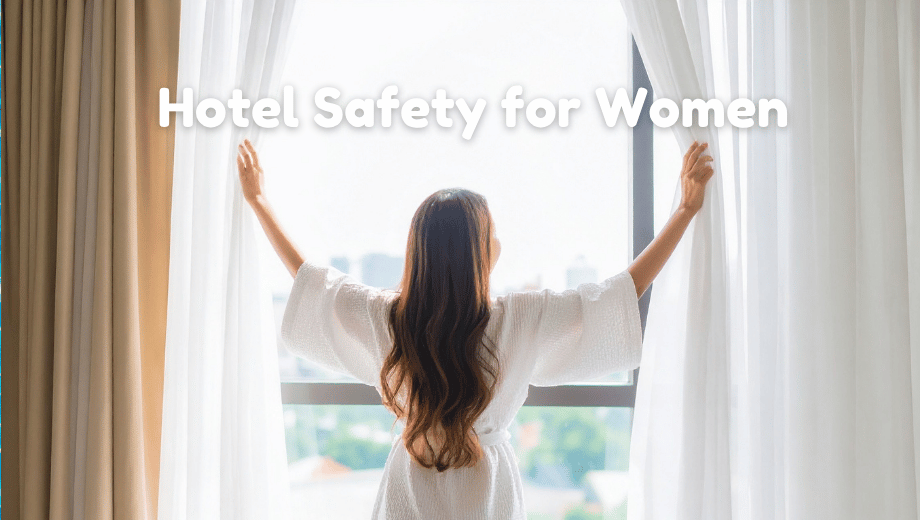She arrives late, suitcase rolling through a quiet lobby where the desk stands empty. For many women, moments like this expose how fragile safety feels during travel. Hotel design, staffing gaps, and inconsistent security often decide if a stay feels secure or unsettling, turning small oversights into vulnerabilities that shape every night’s rest.
Noticing red flags early shifts control back to the traveler. A property’s handling of access points, lighting, and staff conduct signals how much protection it truly offers. Choosing a closer room, confirming locks, or setting boundaries with personnel transforms discomfort into action. Awareness sharpens instincts, creating confidence even in unfamiliar places.
Thin or Inconsistent Security at Hotels
A midnight lobby glow reveals an unlocked door that allows anyone to walk in while cameras tilt toward ceilings instead of entries. Signs such as unattended desks, lax credential checks, or staff who vanish during busy shifts all point to weak visible security. Uniformed employees who ignore disturbances and cameras aimed at blank walls are unmistakable warnings.
Check whether reception is staffed 24/7, if elevators or stairwells require room keys, and if cameras cover both entrances and corridors. Properties lacking these basics often have slow incident response; a sexual assault lawyer would call these preventable oversights. Safer indicators include round-the-clock reception combined with keycard-controlled public doors.
Hotel Staff Showing Overfamiliar Conduct
When hotel staff cross professional lines, it unsettles the balance of trust. Lingering near elevators, asking about personal routines, or pressing to enter a room are all signals that conduct has shifted from service to intrusion. Women traveling alone should treat these behaviors as warnings, not hospitality, and respond quickly with clear, firm boundaries.
Simple choices restore control. Request that deliveries be left at the door, redirect small talk to booking details, and make discomfort visible by speaking to a manager. Documenting names or times strengthens your position, but the first step is recognizing that feeling uneasy is reason enough to act. Intuition often catches risk before evidence confirms it.
Guest Room Features That Do Not Provide Real Protection
A loose deadbolt or a door that clicks without latching becomes obvious right away. Inspect the strike plate, test the chain, and press hinges for wobble; sliding doors on exposed tracks often open despite the lock. A clouded peephole or flimsy latch turns a private room into an easy entry point.
Open windows, balcony handles, and removable screens merit a quick check; lower-level rooms and adjoining doors warrant added caution. Note exposed screws, narrow strike plates, or sliding locks that shift under pressure. A compact travel door jammer or portable latch provides extra resistance and quiet reassurance before sleep, easing into the next check.
Strangers Gaining Access to Guest-Only Areas
Hallways meant for guests become worrying when unfamiliar faces linger near stairwells or propped doors. People pressing elevator buttons without luggage, tailgating through keycard doors, or striking up conversations in corridors show weak oversight. Note staff who ignore loiterers, propped entry points, and doors that fail to lock properly; these are immediate concerns.
Keep interactions brief, move back to public areas when unsure, and record times, descriptions, and badge details. Photograph incidents from a safe distance and share them with the desk or security. Request rooms on floors that require elevator keycard access and ask staff for an escort when strangers appear.
Unsafe Transit Points Around the Property
A car pulls up, curblight fading into a long, shadowed walk toward the lobby. Dim parking rows, overgrown hedges that create blind corners, and covered entryways with no visible staff turn a short transfer into a risky stretch. Watch for removed signage, gates propped open, or unattended shuttle stops; note if cameras point at doors and not parking areas. Low visibility makes tailgating and opportunistic approaches easier.
Check property photos and maps for routes from parking to entrance and favor sites with staffed drop-off points and continuous overhead lighting. A helpful choice: parking near the lobby with keys in hand and arranging a staff escort when lighting is poor.
Hotel safety often comes down to early awareness and steady boundaries. Weak locks, unlit parking areas, or staff who overstep are not inconveniences but signals to act. Women who request room changes, seek escorts, or document concerns turn potential vulnerabilities into moments of control. Portable tools like a door jammer or flashlight add reinforcement, but vigilance begins before booking—with photos, reviews, and a quick call about staffing and security access. Safety is not paranoia; it is preparation. The more proactive the traveler, the calmer each stay becomes.




